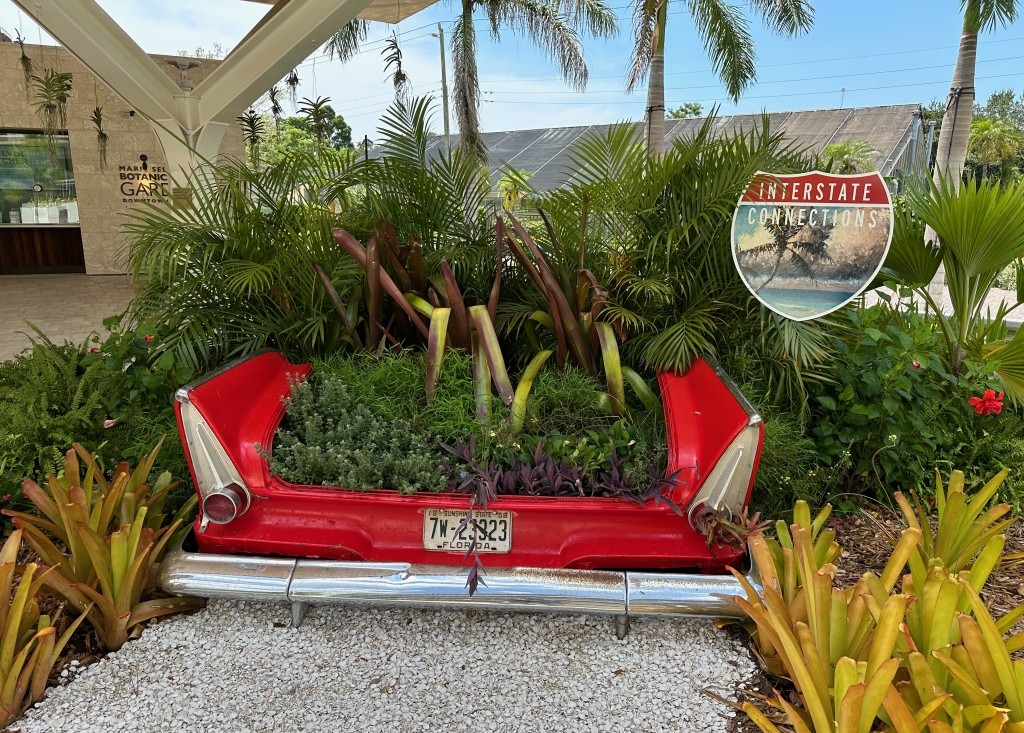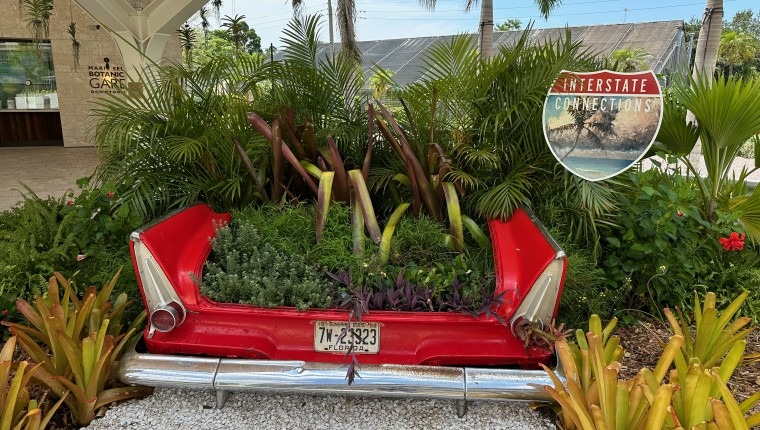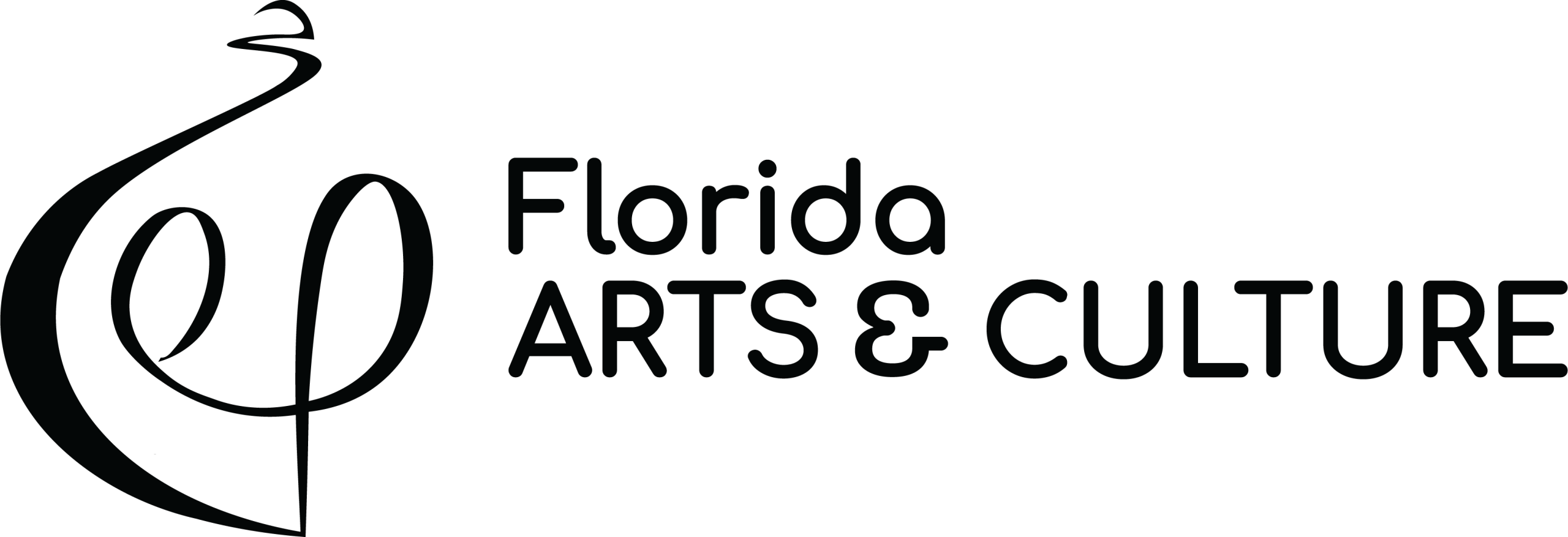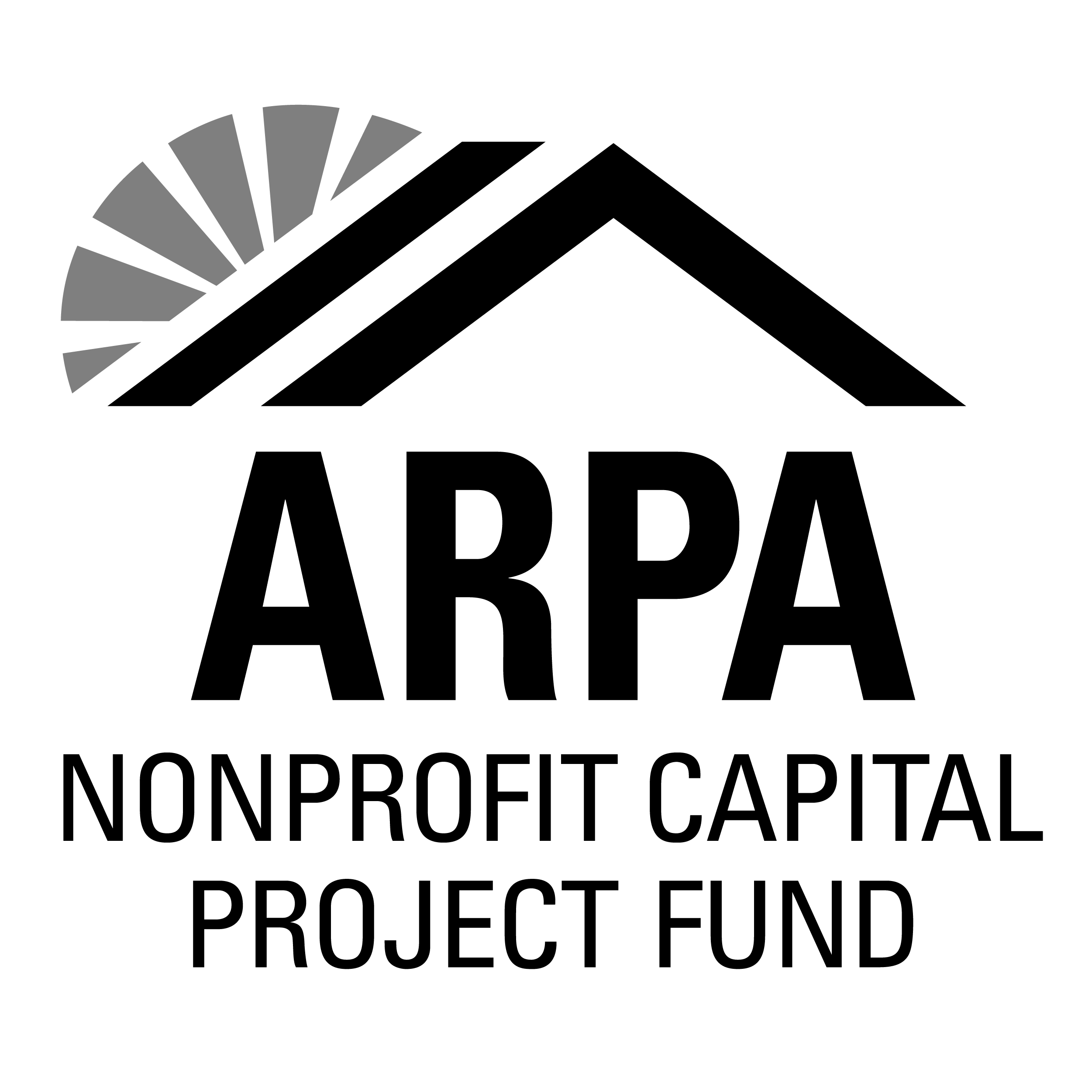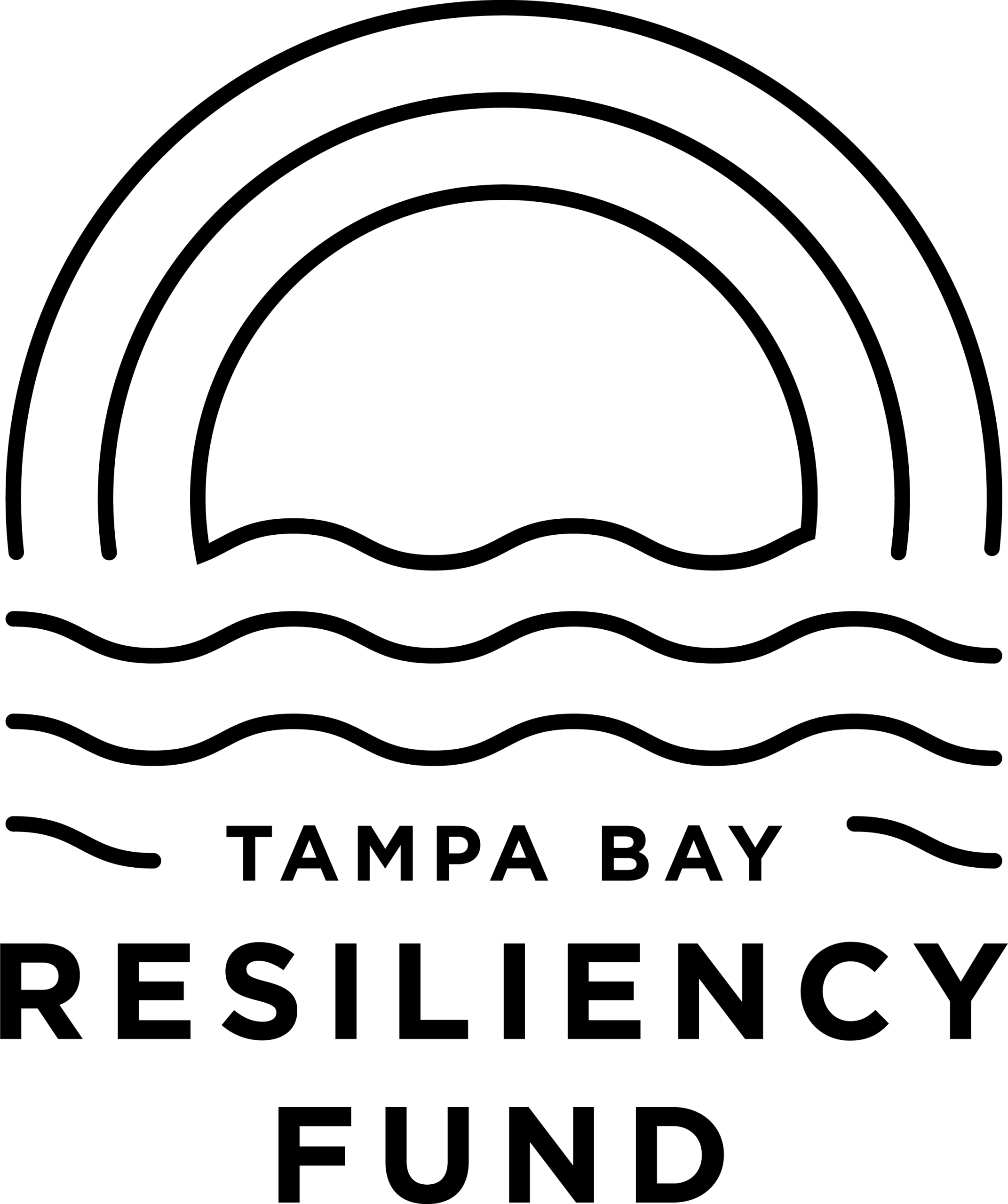Interstate Connections
Through September 15
The Museum of Botany & the Arts
Selby Botanical Gardens, Sarasota
Details here
Next to the ticket booth in Selby Botanical Gardens’ Downtown Sarasota Campus is a red automobile lost in an overgrowth of tropical plants – only its rear end is visible, with even more plants filling the exposed trunk.
The words Interstate Connections printed on a highway sign next to the car hint that this is something more than a quaint picturesque garden display.
There is in fact an exhibition of Florida Highwaymen paintings now on view in Selby Gardens’ Museum of Botany & the Arts.
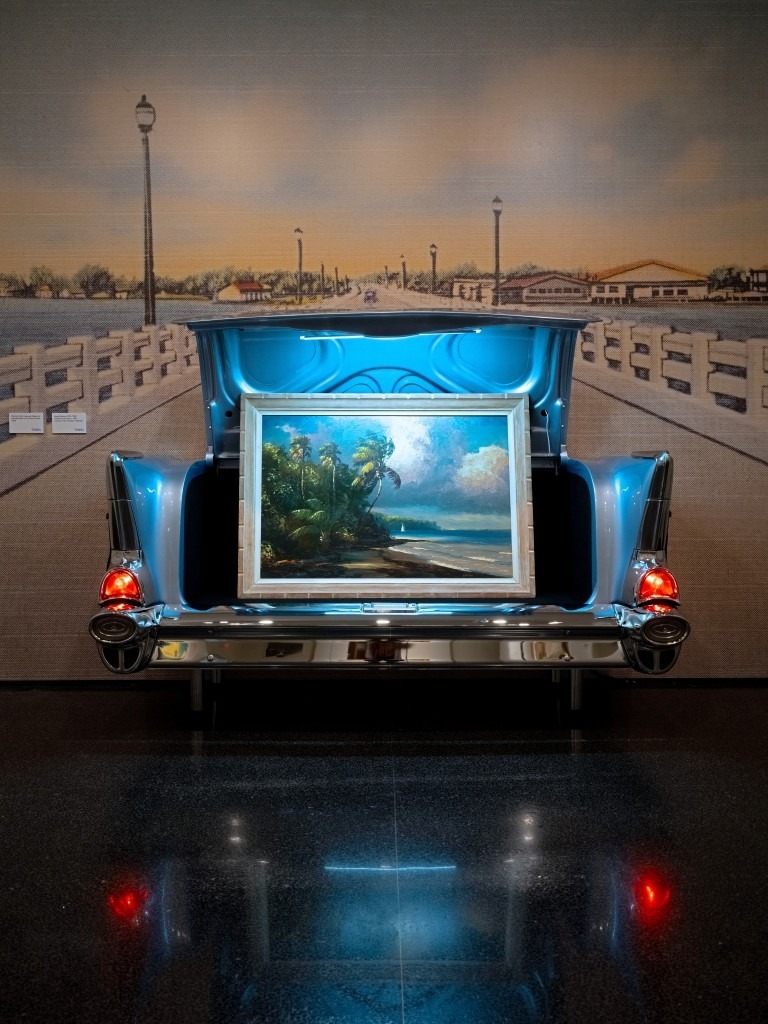
This automotive motif is repeated in the museum’s main gallery where instead of plants, a framed Highwaymen painting is propped up in the open trunk.
This automobile theme is the essence of the Highwaymen story.
The Florida Highwaymen are a group of Black artists from around the Ft. Pierce area who learnt to paint vernacular scenes of the Florida flora landscapes. Most of them were self-taught, they were prolific and became very good. But because of that era’s Jim Crow laws, they were blocked from showing and selling their works through traditional galleries.
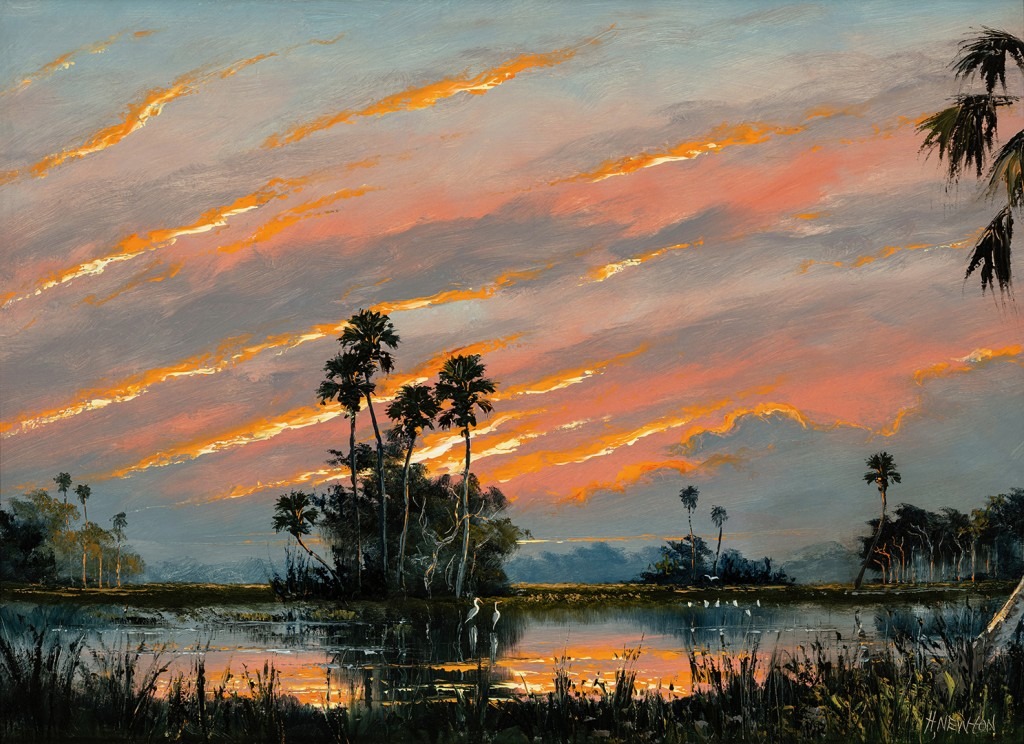
Like water seeking a path of flow, the Highwaymen improvised and loaded the paintings into the trunks of their cars, drove along U.S. Route 1 and State Road A1A along the Florida east coast – and door-to-door, sold their paintings to hotels, banks, offices and residents needing interior décor. Some have credited this as the first instance of the direct sales method.
The artists got their families and friends involved with painting, making frames and selling – the ultimate can-do ethos. Many of the landscapes they depicted were of a Florida before rampant urban developments, making their paintings a record of Florida’s disappearing natural lands.
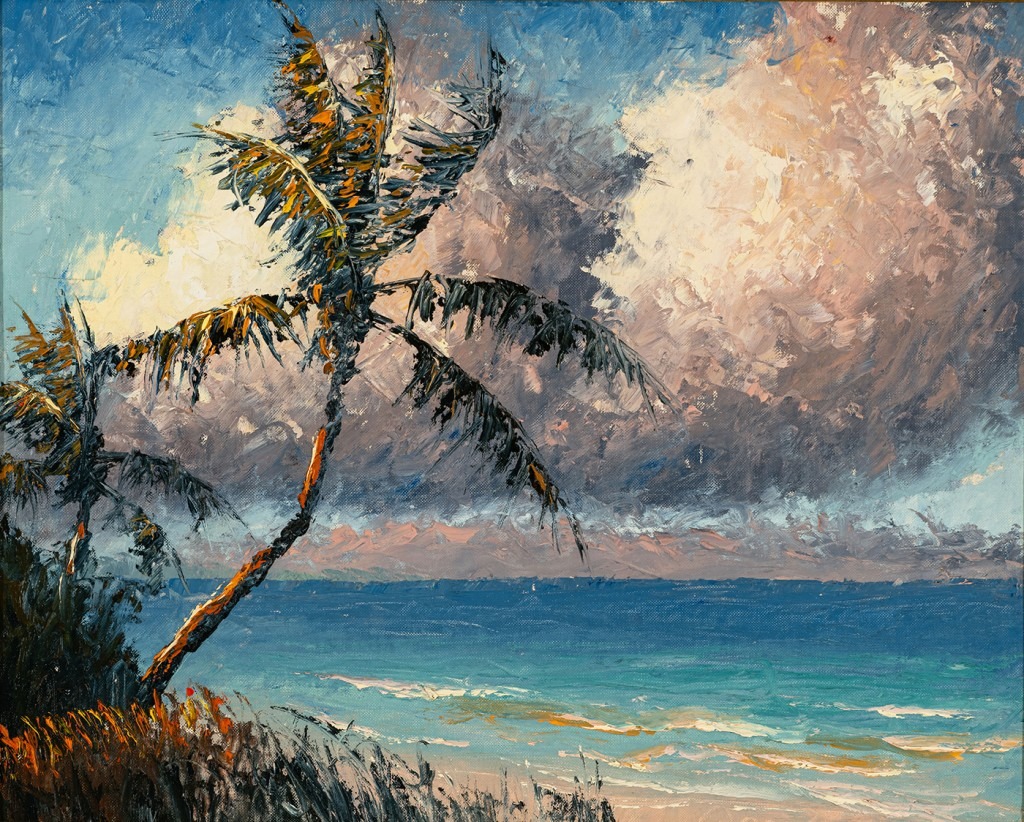
As a whole, it is estimated the Florida Highwaymen produced over 200,000 paintings. At that time the artists sold them for around $25 each. Now their paintings fetch many thousand dollars more.
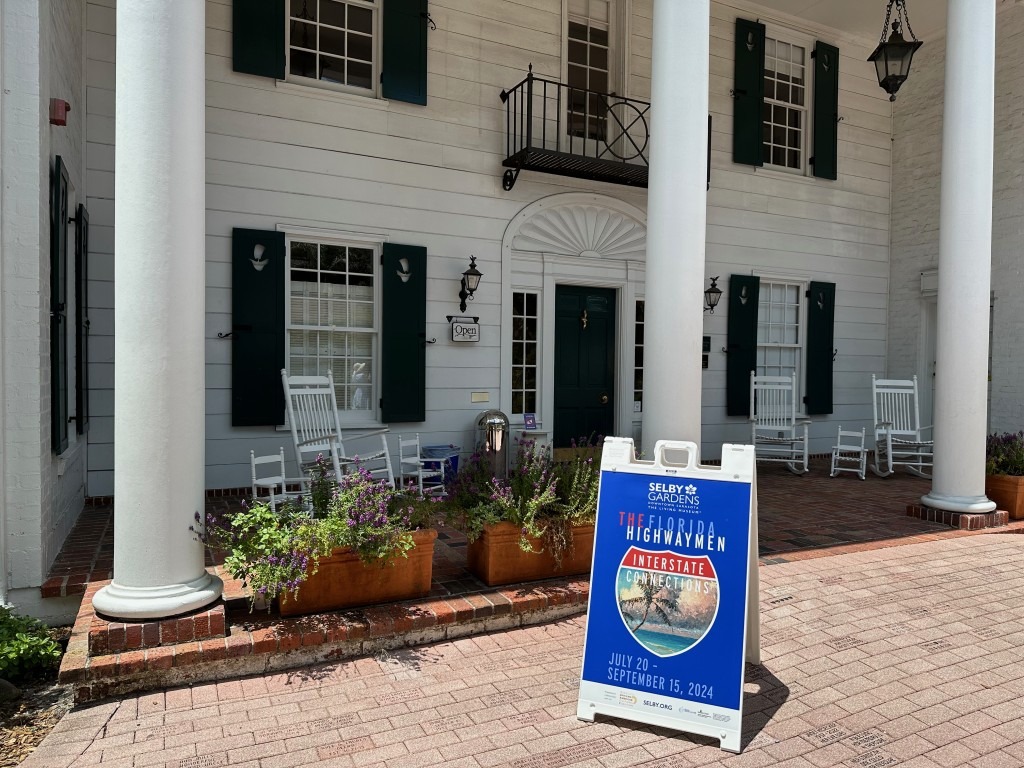
Highwaymen was a moniker coined by Orlando gallerist Jim Fitch in 1994, many years after the Highwaymen’s most active period between 1950s–1970s. This is also the beginning of recognition for the artists’ contribution to the cultural, social and economic history of Florida.
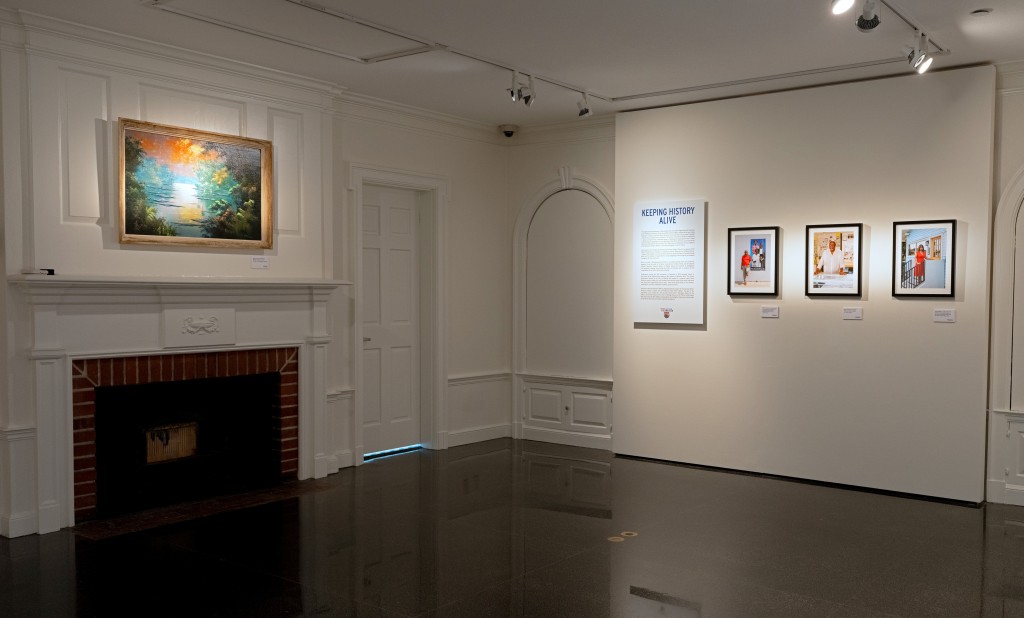
Among the initial 26 Highwaymen was one woman artist, Mary Ann Carroll, who besides being an accomplished painter, was also a mother of seven children, a musician and singer, and could be found on Sundays preaching and singing at her own ministry in Fort Pierce.
In 2011, Carroll presented a painting to Michelle Obama at the First Lady’s Luncheon in Washington, D.C.

Known for her use of colors, Carroll’s painting in the exhibition, Morning on the River, illustrates both the dramatic sunrise colors and its serene reflections on the river.

This exhibition is a good opportunity to see the paintings up close, study the brush and palette knife work – the fast wet-on-wet oil painting method developed by Alfred Hair, the first of the Highwaymen painters and one of the few with formal training.
That’s his painting, Palms on the Florida Coast, in the trunk of the car mentioned above. It’s also the backdrop in the exhibition’s interstate highway sign.
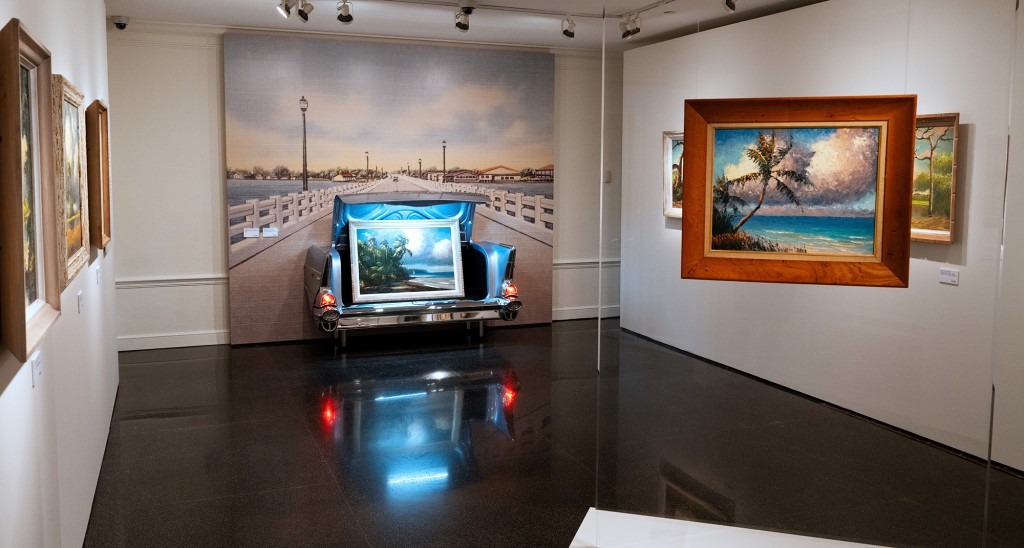
One painting was suspended in the middle of the room so viewers can examine both front and back to see how the Highwaymen’s paintings were made. Many of the frames were leftover materials like crown moldings from house construction.

The Selby Gardens exhibition tells not only the aesthetic aspects of the paintings, but like a Zora Neale Hurston short story, engages viewers into the the deeper history of that particular period – of Jim Crow laws, of the disenfranchised Black communities, and of overwhelming barriers the Highwaymen overcame to thrive from their art.

The exhibition also tells a parallel story of racial segregation and barriers to progress on the West Coast of Florida in Sarasota, a lens viewing local developments that is a slice of a larger picture of what was happening across the whole United States at that time.
The same Jim Crow laws that forbade Highwaymen artists from exhibiting in galleries on the East Coast, prevented public beach access for Sarasota’s Black communities.
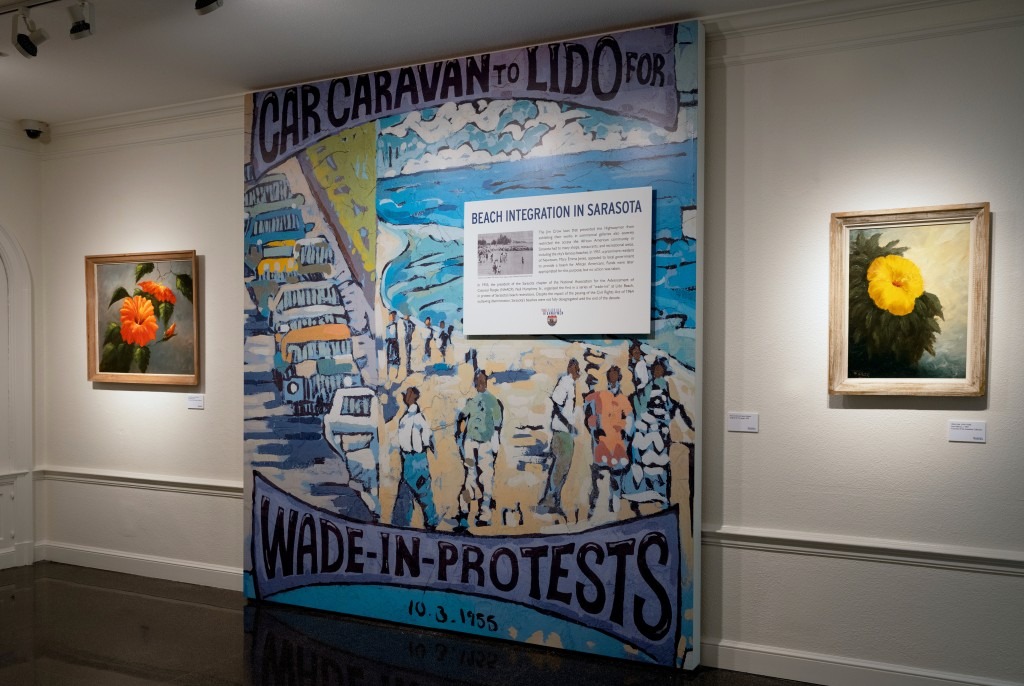
Neil Humphrey Sr., Sarasota’s NAACP president at the time, motivated the Black community in Sarasota’s Newtown to do “wade-ins” protests – by walking the shores, wading in and swimming in the Gulf of Mexico at Lido Beach. This drew media attention, and became one of the fronts in the fight for equality that became part of the national movement that bought about the Civil Rights Act of 1964.

In 2004, the State of Florida inducted the 26 original Florida Highwaymen artists into the Florida Artists Hall of Fame. In 2016, the Smithsonian’s National Museum of African American History and Culture in Washington D.C. opened with 18 Highwaymen paintings in its collection.
